
|
|
Font Size:
|
||||
|
|
|
|
||||
STATISTICAL BRIEF #261:
Offer Rates, Take-Up Rates, Premiums, and Employee Contributions for Employer-Sponsored Health Insurance in the Private Sector for the 10 Largest Metropolitan Areas, 2008
Highlights
- In 2008, the percentage of employees working where health insurance was offered varied across the 10 largest metropolitan areas with New York, Philadelphia, and Boston having higher percentages than the U.S. average (87.7 percent).
- Private-sector employees who worked where insurance was offered had higher than average (61.4 percent) enrollment rates in four of the 10 largest metropolitan areas--Los Angeles, Chicago, Houston, and Washington, D.C.
- The 2008 U.S. average premium for single coverage was $4,386 in 2008; for the 10 largest metropolitan areas, premiums ranged from $3,857 to $4,874.
- The 2008 U.S. average premium for family coverage was $12,298; for the 10 largest metropolitan areas, premiums ranged from $11,454 to $13,835.
- The average employee contribution for single coverage was $882 and the average employee contribution for family coverage was $3,394 for the U.S. in 2008.
Introduction
Employer-sponsored health insurance for current workers is one of the primary sources of health insurance coverage in the United States. Approximately 101.9 million of the 116.1 million employees from the private sector worked in firms where the employer offered health insurance, according to data from the Insurance Component of the 2008 Medical Expenditure Panel Survey (MEPS-IC). Approximately 62.6 million employees enrolled in health insurance of those who worked where it was offered.
This Statistical Brief presents average offer and take-up rates, single and family premiums, and single and family employee contributions for private sector employers in the 10 largest metropolitan areas. It compares these values to national averages for the private sector. These values for employer-sponsored health insurance vary considerably by geographic area and other factors, such as size of firm and industry.
Only those estimates with a statistically significant difference from the national average at the 0.05 percent significance level are noted in the text.
Findings
Among the 116.1 million private sector employees in the United States, 87.7 percent worked where employer-sponsored health insurance was offered in 2008 (figure 1). Among the 10 largest metropolitan areas, New York (90.4 percent), Philadelphia (93.7 percent), and Boston (94.9 percent) had offer rates higher than the national average. No other area's rate differed significantly from the U.S. average.
Among private sector employees in the U.S. who worked where health insurance was offered, 61.4 percent enrolled (figure 2). None of the 10 largest areas had a take-up rate that was significantly lower than the U.S. average for 2008. Los Angeles (68.3 percent), Chicago (66.1 percent), Houston (69.6 percent), and Washington, D.C. (65.8 percent) all had higher than average enrollment rates.
In 2008, the average premium for those enrolled in employer-sponsored single coverage was $4,386 (figure 3). Only Atlanta, of the 10 largest metro areas, had an average single premium ($3,857) below the U.S. average. New York ($4,874), Philadelphia ($4,697), and Boston ($4,765) had average single premiums above the U.S. average.
The 2008 U.S. private sector average premium for family coverage was $12,298 (figure 5). As with single premiums, New York ($13,200), Philadelphia ($13,303), and Boston ($13,835) were higher than average, and Atlanta ($11,454) was lower than average.
In 2008, among private sector employers, the average employee contribution for single coverage was $882 (figure 4). Only New York ($986) and Boston ($1,083) differed from the overall U.S., both with above average single contributions. The average employee contribution for family coverage was $3,394 (figure 6). Houston's ($4,392) average contribution was above the national average; the other areas' family contributions were not significantly different from the national average.
Data Source
This Statistical Brief summarizes data from the 2008 MEPS-IC. The data are available on the MEPS Web site at http://www.meps.ahrq.gov/mepsweb/survey_comp/Insurance.jsp or have been produced using special computation runs on the confidential MEPS-IC data available at the U.S. Census Bureau.
Definitions
Single coverage
Single coverage is health insurance that covers the employee only. This is also known as employee-only coverage.
Family coverage
Family coverage is health insurance that covers the employee and one or more members of his/her immediate family (spouse and/or children as defined by the plan). Some plans offer more than one rate for family coverage, depending on family size and composition. If more than one rate is offered, survey respondents are asked to report costs for a family of four.
Metropolitan areas
Metropolitan areas are Metropolitan Statistical Areas (MSAs) defined and published by the Office of Management and Budget (OMB) as of June 6, 2003. Counties included in each area can be found in the Appendix of OMB Bulletin No. 04-03: http://www.whitehouse.gov/omb/bulletins/fy04/b04-03.html
Size and ranking of metropolitan areas was determined using the most recent U.S. Census Bureau rankings available at the time of this analysis: http://www.census.gov/popest/metro/tables/2008/CBSA-EST2008-05.xls
Note that the name of the central city of each MSA has been used in the text and tables for convenience and brevity. The areas consist of more than the central cities. For instance, Washington, D.C. consists of the central city plus counties in Maryland, Virginia, and West Virginia.
About MEPS-IC
MEPS-IC is a survey of business establishments and governments that collects information on employer-sponsored health insurance, such as whether insurance is offered, enrollments, types of plans, and premiums. The survey is conducted annually by the U.S. Census Bureau under the sponsorship of the Agency for Healthcare Research and Quality (AHRQ). The yearly response rate has averaged 78 percent for in-scope sample units. Approximately 4 percent of the original sample has been out-of-scope in a typical year. A total sample of 42,000 establishments was selected for the 2008 survey, prior to accounting for losses due to nonresponse and out-of-scope cases.
For more information on this survey, see MEPS Methodology Reports 6, 8, 10, 14, 17, and 18 on the MEPS Web site at http://www.meps.ahrq.gov/mepsweb/data_stats/publications.jsp and Insurance Component Survey Basics at http://www.meps.ahrq.gov/mepsweb/survey_comp/Insurance.jsp.
Suggested Citation
Crimmel, B.L. Offer Rates, Take-Up Rates, Premiums, and Employee Contributions for Employer-Sponsored Health Insurance in the Private Sector for the 10 Largest Metropolitan Areas, 2008. Statistical Brief #261. September 2009. Agency for Healthcare Research and Quality, Rockville, MD. http://www.meps.ahrq.gov/data_files/publications/st261/stat261.shtml
AHRQ welcomes questions and comments from readers of this publication who are interested in obtaining more information about access, cost, use, financing, and quality of health care in the United States. We also invite you to tell us how you are using this Statistical Brief and other MEPS data and tools and to share suggestions on how MEPS products might be enhanced to further meet your needs. Please e-mail us at MEPSProjectDirector@ahrq.hhs.gov or send a letter to the address below:
Steven B. Cohen, PhD, Director
Center for Financing, Access, and Cost Trends
Agency for Healthcare Research and Quality
540 Gaither Road
Rockville, MD 20850
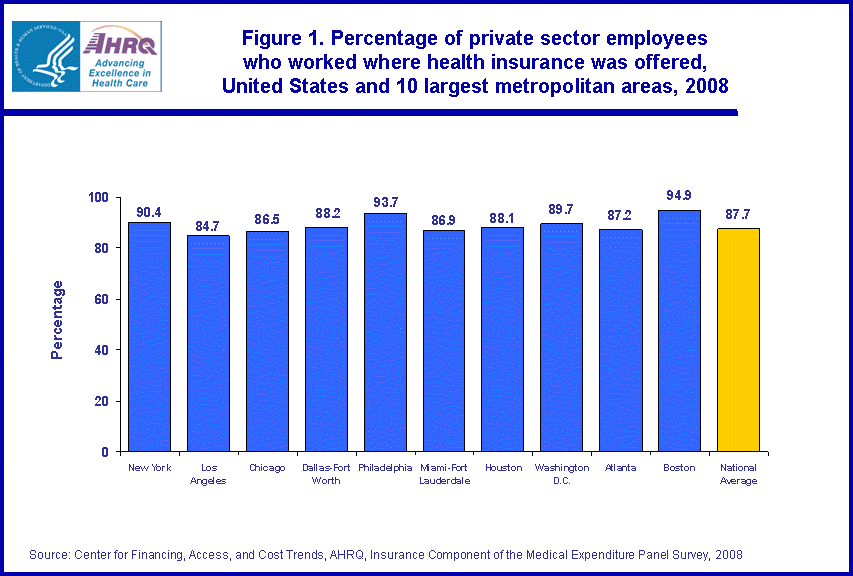 |
||||||||||||||||||||||||||||||||||||||||||||||||
|
||||||||||||||||||||||||||||||||||||||||||||||||
|
|
||||||||||||||||||||||||||||||||||||||||||||||||
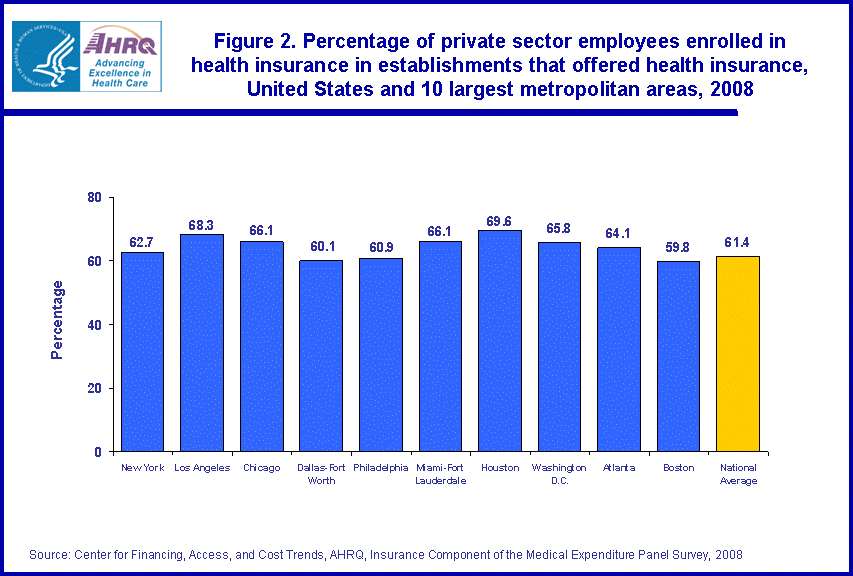 |
||||||||||||||||||||||||||||||||||||||||||||||||
|
||||||||||||||||||||||||||||||||||||||||||||||||
|
|
||||||||||||||||||||||||||||||||||||||||||||||||
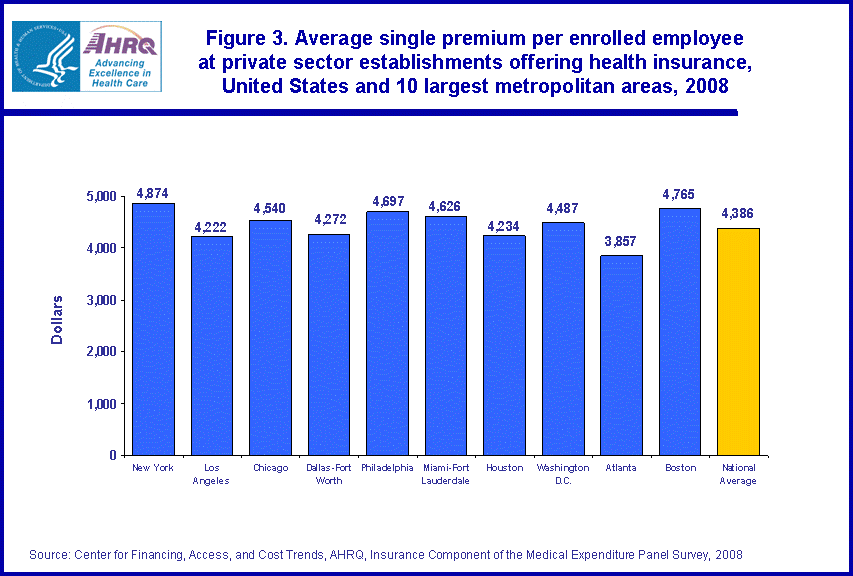 |
||||||||||||||||||||||||||||||||||||||||||||||||
|
||||||||||||||||||||||||||||||||||||||||||||||||
|
|
||||||||||||||||||||||||||||||||||||||||||||||||
 |
||||||||||||||||||||||||||||||||||||||||||||||||
|
||||||||||||||||||||||||||||||||||||||||||||||||
|
|
||||||||||||||||||||||||||||||||||||||||||||||||
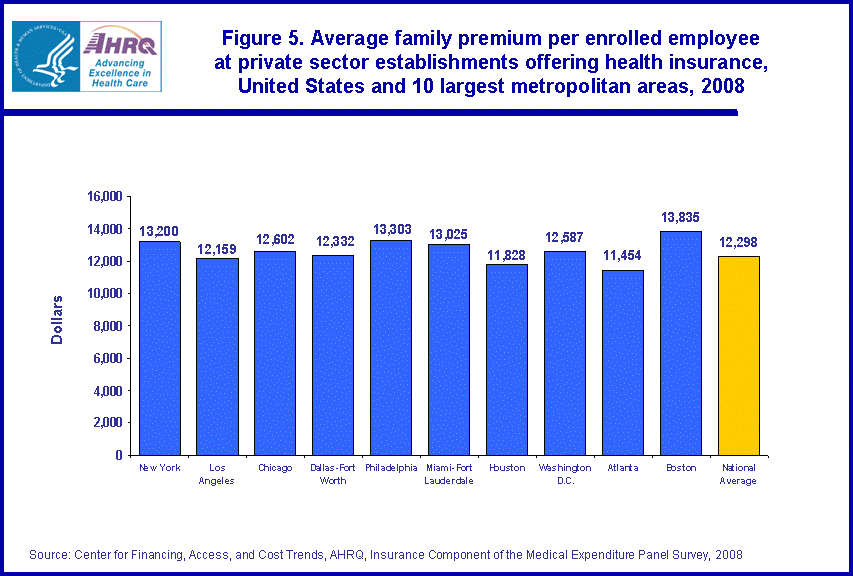 |
||||||||||||||||||||||||||||||||||||||||||||||||
|
||||||||||||||||||||||||||||||||||||||||||||||||
|
|
||||||||||||||||||||||||||||||||||||||||||||||||
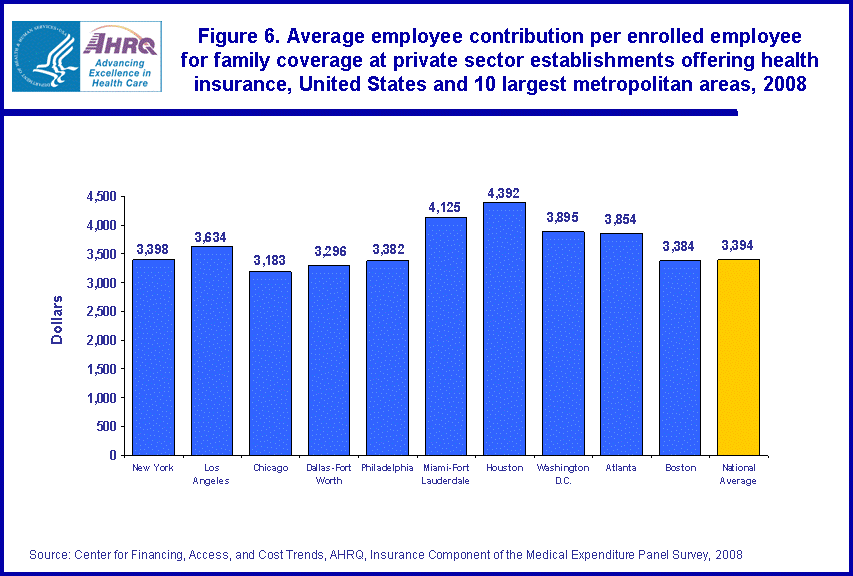 |
||||||||||||||||||||||||||||||||||||||||||||||||
|
||||||||||||||||||||||||||||||||||||||||||||||||
|
|
||||||||||||||||||||||||||||||||||||||||||||||||


